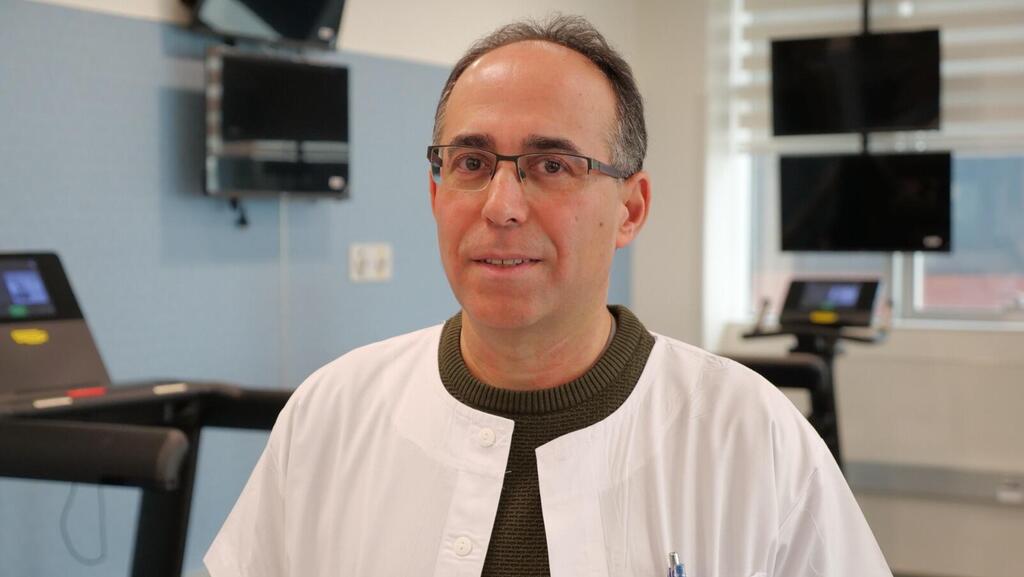Getting your Trinity Audio player ready...
The hospitalization of former prime minister Naftali Bennett following a cardiac event during a workout has reignited debate over the link between exercise and heart attacks among both professional athletes and fitness enthusiasts.
Experts stress that while regular exercise is crucial for health, it may temporarily increase cardiac risk during intense activity — especially for those with undiagnosed heart conditions.
Heart attacks during exercise: rare but real
Routine physical activity significantly improves blood pressure, blood sugar levels, cholesterol, weight and body composition. Global health guidelines recommend at least 150 minutes of moderate-intensity or 75 minutes of vigorous-intensity exercise per week to reduce cardiovascular risk.
However, despite these benefits, high-intensity exertion can temporarily raise the risk of arrhythmia or heart attack, even in otherwise healthy individuals. Reports of young, seemingly healthy gym-goers or athletes collapsing mid-workout often draw widespread media attention due to the public setting and surprising nature of such events.
Sudden cardiac arrest in athletes is extremely rare. A recent U.S. study found that such incidents occur in approximately one out of every 100,000 marathon or half-marathon finishers — less frequently in women.
Among young athletes, the most common cause is an undiagnosed structural heart condition, such as hypertrophic cardiomyopathy or electrical disorders. After age 35, the main cause shifts to coronary artery blockages due to atherosclerosis, which can lead to heart attacks and fatal arrhythmias.
Endurance sports and older athletes
Participation in endurance sports — long-distance running, cycling, triathlons — has surged, not just among people in their 30s and 40s but also among those in their 60s and 70s. Many of these older athletes took up sports later in life and may carry cardiovascular risk factors like high cholesterol, hypertension or chronic kidney disease.
Imaging studies show that even high-level endurance athletes can develop coronary artery disease at similar rates to their less active peers. There is a common misconception that intense exercise provides immunity from heart disease, which is often viewed as a condition affecting only the elderly.
Get the Ynetnews app on your smartphone: Google Play: https://bit.ly/4eJ37pE | Apple App Store: https://bit.ly/3ZL7iNv
What is a heart attack and who’s at risk?
A heart attack occurs when a plaque in a coronary artery ruptures, triggering a clot that blocks blood flow to the heart muscle. Known risk factors include smoking, inactivity, poor diet, diabetes, obesity, abnormal cholesterol levels and high blood pressure. Other
influences—such as age, sex, ethnicity, genetics, chronic inflammatory diseases, clotting disorders and psychosocial stress — are less controllable but still relevant.
Risk assessment before exercising
For individuals over 35, especially those planning vigorous physical activity, doctors recommend a heart risk evaluation. This includes reviewing personal and family history, checking for symptoms, performing a physical exam, screening for risk factors, conducting an electrocardiogram (ECG) and possibly a stress test.
Based on findings, further cardiac imaging — such as a stress echocardiogram or coronary CT angiography — may be warranted.
Even asymptomatic individuals may harbor silent risk factors like elevated blood pressure, cholesterol, blood sugar or genetically determined lipoprotein(a), which can only be detected through testing.
Despite the need for caution, experts stress that regular physical activity should be encouraged across all age groups, as high fitness levels are associated with reduced chronic illness and lower rates of heart disease.
Warning signs to pay attention to
Symptoms like chest pain during exertion, unexplained shortness of breath, dizziness or a sudden drop in performance should prompt immediate medical evaluation. Staying hydrated and gradually increasing training intensity can help reduce risks.
Returning to exercise after a cardiac event
Cardiac rehabilitation plays a vital role in helping patients safely resume physical activity after a heart attack or related intervention. Covered by Israel’s public health system, rehabilitation programs aim to restore physical and mental functioning and reduce the likelihood of future cardiac events.
These programs include supervised exercise, risk factor management, nutrition counseling, group support and psychological care. The multidisciplinary team typically includes cardiologists, nurses, exercise physiologists, trainers, dietitians and psychologists.
For those previously engaged in intense physical activity, fear of recurrence is common. Personalized rehab plans, including ECG-monitored workouts, help patients regain confidence and return to a healthy, active lifestyle under professional supervision.
- Prof. Barak Zafrir is a senior cardiologist and director of the cardiac rehabilitation service at Rambam Health Care Campus. He also serves as chair of the cardiovascular prevention and epidemiology committee of the Israel Heart Society.






